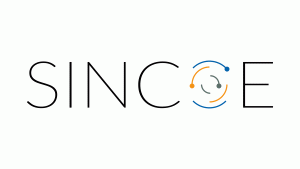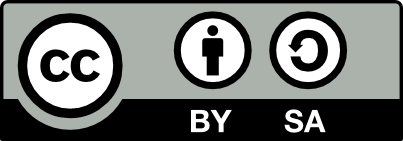What is the SINCOE@ Assessment Tool?
Innovative behaviour and generic innovation competencies are shared aims for degree studies in all study fields in all European higher education institutions. However, narrower views have been put on how students are learning innovation competencies in digital environments. Additionally, empirically validated instruments to identify and assess learning of innovation competencies in educational online contexts are missing.
The novel re-validated SINCOE@ Assessment Tool is created to help identify, assess, and develop innovation competencies in online learning situations. The assessment tool includes five dimensions with 33 items of innovation competencies and one subdimension with four optional items with sustainable development aspects as part of the critical thinking dimension.

Following the definition of SINCOE@ Assessment Tool, innovation competence is the ability to create, introduce, adapt, and or apply a beneficial novelty in any part of an organization. That is to say, being able to introduce something new (an idea, a method or process to do something, or a device, or an invention) or the useful improvement of something that already exists and adds value to people or organizations and society or planet. In the search for adding value, the innovation process starts with the proposal and generation of new ideas and ends with using the results.
Why to use the SINCOE@ Assessment Tool?
The SINCOE@ Assessment Tool helps students identify their strengths and weaknesses in innovation competencies. It encourages students to actively monitor and regulate their learning by reflecting on their achievements and demonstrating whether the requirements of courses have been fulfilled. Continuous self-monitoring helps them to identify learning opportunities. The process also expands their understanding of their professional identity. This kind of self-monitoring and reflection also enhances students’ metacognitive skills and prepares them better for adapting to new tasks, complex life, and work environments.
Additionally, with the help of innovation competence dimensions, students can describe their skills more concretely, such as their strengths in creative problem-solving or teamwork. The ability to describe one’s own competence in a variety of ways helps in job-seeking.
Moreover, the SINCOE@ Assessment Tool also raises awareness of innovative behaviours. According to Messmann and Mulder (2011), work contexts offer many opportunities for innovation, but individuals must recognize these to become active innovators. Thus, the SINCOE@ Assessment Tool helps to understand the importance of applying innovation competencies in both innovation processes and work practices.
How to use the SINCOE@ Assessment Tool?
The assessment tool can be applied in many ways.
Here you will find the assessment tools, definitions of dimensions, and all 37 statements that describe behavior in line with innovation competencies. The assessment tools are available in English, Finnish, German, and Spanish.
You can define the assessment scale yourself, for example, on a scale of 1-5 or 1-10. The assessment tool can also be used without a scale, for example, for individual or group discussions, selecting learning objectives, or as an observation tool. Read more about various practical examples here.
Students
It can be used as a student assessment, for example, as self- or peer assessment or group reflection of a student team. The tool can be contextualised to a single project, course or (online) learning environment, or it can be used to support the reflection of long-term competence, for example, throughout the degree.
Case examples:
- Improving the validity of self-assessment through preparatory self-assessment training. – SINCOE Toolbox
- Use Innovation Competence Self-Assessment as a basis for a conversation during tutoring – SINCOE Toolbox
- Enhancing Team Competencies: A Case Study on Motivating Students, Peer Assessment with Sincoe@, and Mapping Team Roles to Innovative Outcome – SINCOE Toolbox
Teachers:
In teacher assessment, it can be used, for example, in teacher assessment assessing the teacher’s or team of teachers’ own innovation competencies in the implementation of pedagogical solutions. Additionally, the tool can also be used as a frame of reference in the planning of pedagogical script and teaching to mirror whether pedagogical online solutions that enable the development of students’ innovation competencies are realised in the plans. In this way, it helps identifying the special skills that are emerging during their pedagogical practices, and thus, support in evaluating the quality of their own course designs or implementations.
Case example: Innovation competences as a guideline for course design – teacher´s innovation competences – SINCOE Toolbox
External actors
In external assessment, the tool can be used, for example, in giving feedback to student teams when an external actor is unable to continuously monitor students’ work and learning. The tool helps to articulate and concretise students’ work and accomplishments. The external feedback supports the learning process and students’ motivation alongside course evaluations.
Case examples: Apply SINCOE@ Assessment Tool as a feedback tool for student project-based learning – SINCOE Toolbox
Facilitating effective self-assessment with the SINCOE@ Assessment Tool
Successful, reliable, and realistic assessments always require prior discussions with students and careful preparation, ensuring a common understanding and motivating students to self-assess. Educators can help students develop the skills needed for effective and development-oriented self-assessment, leading to greater self-awareness and continuous improvement.
- Clear objectives: The assessment tool alone isn’t enough; joint discussions and clear introductions to the assessment goals, methods, and criteria are essential. Explain what is being assessed, and why.
- Provide Examples: Use practical examples to illustrate and contextualize what innovation competence means in practice. This helps students observe their own performance accurately.
- Encourage Reflection: Create opportunities for students to reflect on their learning experiences of innovation competence. This can be through discussions or self-reflection exercises. Reflection not only deepens the learning but also helps students recognize their strengths and areas for improvement.
- Peer and Team Assessment: Utilize peer or team assessment activities. This not only helps students learn to assess others but also provides additional perspectives on their own competence.
- Foster a Supportive Environment: Build an onsite or online classroom culture where self-assessment is seen as a positive and constructive process. Encourage honesty and openness.
- Feedback: Offer regular, constructive feedback to guide students in their self-assessment. Highlight both strengths and areas for improvement.
- Personal Goals: Encourage students to set personal learning goals, based on their self-assessments. For example, guide students to select relevant items from the innovation competence list. This helps them take ownership of their learning journey and competence development.
How to access SINCOE@ Assessment Tool
Institutions can implement data collection through their own learning platforms. For institutions without suitable platforms, dedicated diagnostic support platforms are available – these automatically generate and send reports to participants, who may choose to share them with their teachers.
Hosted by UPV and free access:
This route points to the latest version http://rogle-moodle.webs.upv.es/alias/sincoe@self.htm
This self-assessment tool offers the option for a 360º degrees assessment with a simple and brief peer assessment (not intended for evaluation but for feedback from colleagues approached directly by participants)
Hosted by Cogknit Oy:
Cogknit offers a comprehensive SaaS application that integrates a Learning Management System (LMS), workshops, coaching, 360-degree assessments, industry-aligned projects, and tailored career pathways, providing strong support for pedagogical practices and promoting lifelong learning through its streamlined, holistic learning environment.
Learn more: www.cogknit.io or contact: contact@cogknit.io





